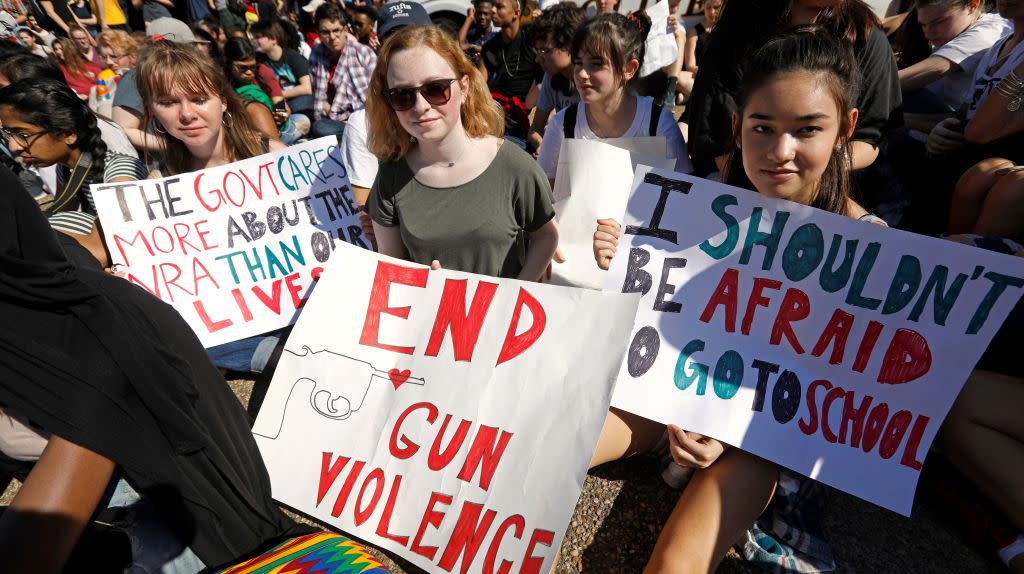These issues are more worthy of becoming a national emergency than the “border crisis”

Donald Trump is declaring a national emergency at the border to stop what he claims to be a “national security and humanitarian crisis.” This is his latest move to counter Congress’s refusal to grant him $5.7 billion to fund the construction of a wall between the US and Mexico.
Declaring a state of emergency would allow Trump to use money for the wall without it being allocated by Congress. Lawmakers have already said they will challenge the declaration—because, well, there isn’t really an emergency at the southern border.
If the president wanted to handle one of the US’s actual emergencies, he might want to consider calling a state of emergency over a number of other issues more pressing than border security, like gun violence or suicide, which lead to many more deaths than anything happening at the border.
A made-up crisis at the southern border
Trump’s scaremongering about links between border crossings and M-13 gang members doesn’t stand up to fact-checking, nor do his claims that undocumented immigrants are entering the US in unprecedented numbers, and that they are to blame for the rise in heroin trafficked from Mexico. The majority of undocumented immigrants in the US didn’t even enter the country illegally, data shows, but rather with visas that they end overstaying.

Though there isn’t a database of deaths caused by undocumented immigrants, a Cato Institute estimate based on convicted murderers in Texas shows the rate of homicides committed by undocumented immigrants in the US would amount to, at most, 1.8 per 100,000 undocumented immigrants. That’s probably higher than elsewhere in the country, given Texas is likely to have higher concentrations of convicted undocumented immigrants due to its large immigrant population and lack of sanctuary laws.
According to the latest data, there are about 10.6 million undocumented immigrants in the US. If they committed homicide at the rate calculated by the Cato Institute, that would amount to 190 murders—about 1% of the over 17,200 murders committed in the US every year.
Suicide: 47,000 deaths
Compare that to suicides. The rate of suicide in the US has gone from 10.4 for every 100,000 people to 14.5 per 100,000 in less than 20 years. White men—a key part of Trump’s constituency—account for the vast majority of suicides. The reasons are complex—including financial woes and social pressure—but the lack of access to affordable mental healthcare is exacerbating the issue.

Gun violence: 40,000 victims per year
Gun violence is another issue Trump could work on. Gun deaths hit a 20-year high in 2017, the latest year for which data is available. (The official number for 2018 won’t be released until late this year.)
Since the shooting at a high school in Parkland, Florida last year, where 17 children were killed, 1,200 more minors lost their lives due to gun violence—which is the second-highest killer of children in America, after road accidents. So far this year, the US has had 37 mass shootings—those in which four or more people were shot or killed—up from 29 mass shootings in the same time frame in 2018. A study published in 2016 in The American Journal of Medicine, looking at data from 2010, found that the US has a rate of death by firearm several times higher than all other comparable high-income countries.

Maternal mortality: 1,200 estimated deaths per year
With an estimated 26.4 maternal deaths per 100,000 live births, the maternal mortality rate in the US is several times higher than it is in all other wealthy countries. Further, the US is an outlier in the world: While the global maternal mortality rate has been halved since the 1990s, in the US it has doubled.

This is an issue that has deep roots in the health system inequalities, and the deep disparities of access and treatment that run between ethnic groups. The rate for African American mothers is nearly 40 per 100,000 live births, compared to the national average of around 18 per 100,000.

It’s yet another pressing problem the Trump administration could choose to tackle via an emergency declaration.
Sign up for the Quartz Daily Brief, our free daily newsletter with the world’s most important and interesting news.
More stories from Quartz:

